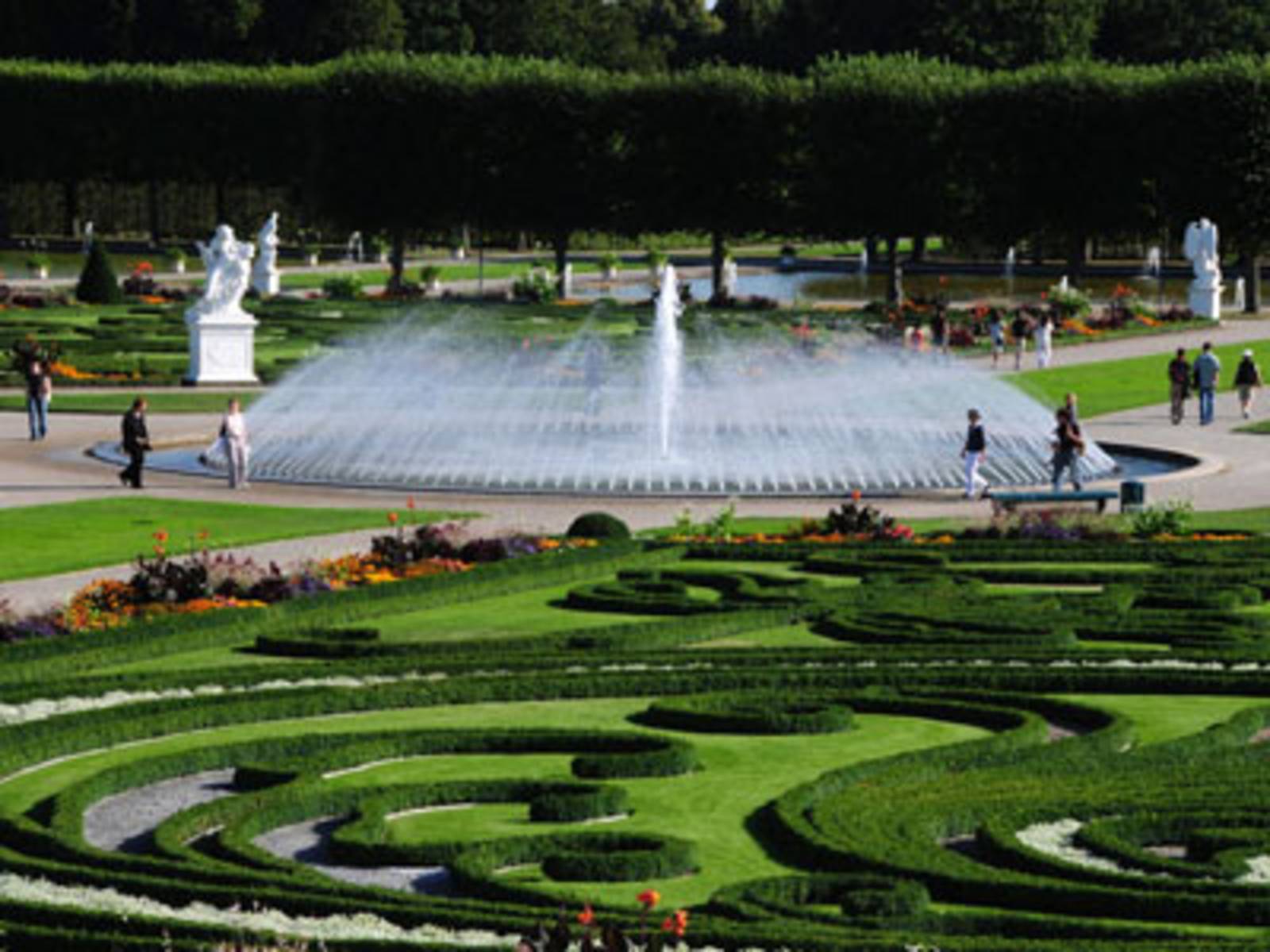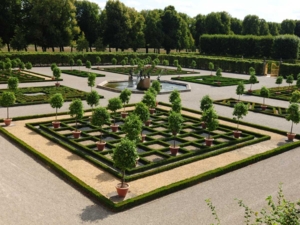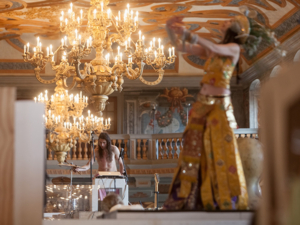Herrenhausen Gardens
Grosser Garten
The jewel in the crown.
 © Hassan Mahramzadeh
© Hassan Mahramzadeh Great Parterre and Bell Fountain
Hannover has an exceptional woman to thank for the greatest treasure that the city possesses: the Baroque garden in Herrenhausen was created by Electress Sophie (1630-1714).
The story of Grosser Garten began in the year 1666 with a commission by Duke Johann Friedrich to lay out a pleasure garden to the south of the modest palace. Most of its pleasures, though, were initially the enjoyment of the fruit that grew there. It was only when the Duke's brother, later to become Elector Ernst August (reigned 1679-1698) came to the throne in Hannover that Herrenhausen began to bloom and attained its greatest splendours. Electress Sophie found her life's work at Herrenhausen; between 1680 and 1714 nothing was undertaken here that was not at her express command. In Holland, where she grew up, she had developed an enthusiasm for its kitchen- and ornamental gardens, and on her travels in Italy she was inspired by its extravagant splendours. At Versailles she discovered Baroque forms, and Louis XIV demonstrated the fountains and water features – by which she was however less impressed.
The work of three decades
 © Hassan Mahramzadeh
© Hassan Mahramzadeh The Orange Parterre
Over three decades, master gardener Martin Charbonnier laid out Grosser Garten according to Sophie's wishes: rare plants were purchased in Holland and Hamburg, wagonloads of orange trees were delivered, renowned sculptors carved statues, and the waters of the Graft framed the garden on the Dutch model. Grosser Garten was the setting for the extravagant festivities of court society, with gondola rides on the Graft, Venetian nights and ostentatious masked balls.
Meeting place of the arts and sciences
 © Helge Krückeberg
© Helge Krückeberg The KunstFestSpiele are one fine example of arts and culture in Herrenhausen in the modern day – the photo shows a performance by Jan Lauwers and his Needcompany in the year 2013
Herrenhausen in Sophie's times was the stage of European high politics and meeting place of the arts and sciences. Here, Tsar Peter the Great danced with Sophie; here, George Frideric Handel composed and played; here, the high aristocracy of Europe was entertained, and here the polymath Leibniz pondered on philosophy and science as he paced the garden.
Music, dance and theatre at Herrenhausen – this tradition thrives today with drama in the hedge theatre, concerts, festivals, world-class small-scale performing arts and international fireworks competitions to enliven Grosser Garten in Herrenhausen all year round.

 Deutsch
Deutsch
 English
English
 中文
中文
 Dansk
Dansk
 Eesti
Eesti
 Español
Español
 Suomi
Suomi
 Français
Français
 Italiano
Italiano
 日本語
日本語
 한국
한국
 Nederlands
Nederlands
 Norge
Norge
 Polski
Polski
 Portugues
Portugues
 Русский
Русский
 Svenska
Svenska
 Türkçe
Türkçe